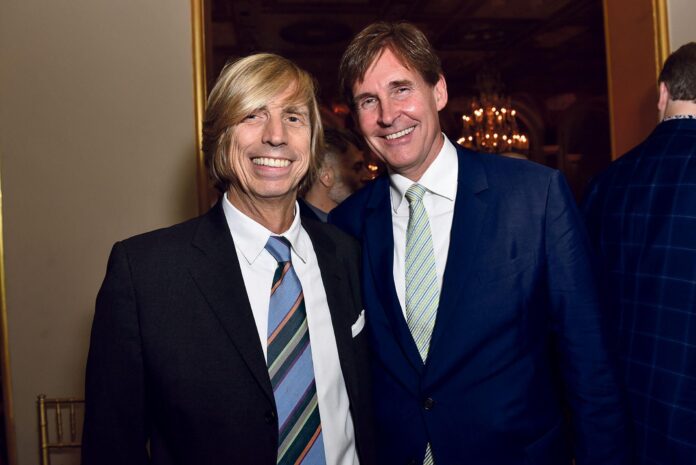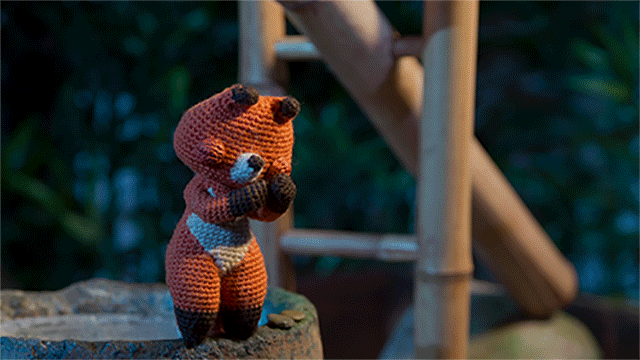The collectors James-Keith Brown and Eric Diefenbach are influential supporters of museums in the communities between which they split their time: New York City and Ridgefield, Connecticut. At the former, Brown is the president of the New Museum board of trustees; at the latter, Diefenbach is chair emeritus of the board at the Aldrich Contemporary Art Museum.
Their wide-ranging collection of contemporary art includes works by Yayoi Kusama and Olafur Eliasson but is especially rich in post-war German art. Their holdings, including pieces by Joseph Beuys, Gerhard Richter, Sigmar Polke and Martin Kippenberger, were the subject of a major travelling exhibition in 2011-12. More recently, the couple bought and extensively restored the 1950s childhood home of the singer-songwriter James Taylor in North Carolina.
The Art Newspaper: What was the first work you bought?
James-Keith Brown and Eric Diefenbach: A drawing by Sol LeWitt. In the early 1990s, we were regularly visiting museums and smaller art spaces in New York. Back then, many art spaces and charities held large silent auctions at their benefits offering both emerging and established artists’ works—the New Museum, the Whitney Museum of American Art, Bailey House and the Coalition for the Homeless, among others. One night, we bid on and won a beautiful LeWitt drawing. We’ve been collecting and supporting arts and other organisations ever since.
What was your most recent purchase?
A drawing by Tammy Nguyen and new works by UK-based artist Poppy Jones and California-based Hugo McCloud. We’ve also recently acquired some “older works”, including a Martha Diamond painting from the 1980s, and a sculpture and painting from the 1980 and 90s by the Japanese artist Goro Kakei.
If your house was on fire, which work would you save?
Brown: I would take our blue and green Josef Albers Homage painting. It’s beautiful, influential, and is a core piece in our collection of German work from 1940 to the present.
Diefenbach: I’d take Mark Bradford’s Nasty Ass Pigeons from 2002, a favourite, more contemporary work. It would hang nicely with the Albers wherever we ended up.
If money were no object, what would be your dream purchase?
Tough. Pieter Bruegel the Elder’s Hunters in the Snow (1565)? Vincent van Gogh’s The Starry Night (1889)? A Jasper Johns US map painting? Closer to our collection’s concentration, a fine Vassily Kandinsky or Paul Klee?
Which work do you regret not buying when you had the chance?
We were offered a Yayoi Kusama Infinity Mirror Room in Tokyo 20 years ago but passed because of space and price. Though we wouldn’t part with the two paintings and the works on paper we purchased instead, we should have sprung for the room, too.
What is the most surprising place you have displayed a work?
Nothing too surprising. We have a Pipilotti Rist video viewed on the side of a medicine chest (the artist’s frame) installed in a guest bathroom, and a Martin Creed work of 23 paper elements winds up the back stairs.
Which artists, dead or alive, would you invite to your dream dinner party?
Andy Warhol, Josef and Anni Albers, Pablo Picasso, Kusama, Kandinsky, Klee, Joseph Cornell, Hannah Höch, Jack Whitten and Louise Nevelson. Likely a lively group.
What is the best collecting advice you’ve been given?
Best was the simplest: buy what you like. We would add look, listen and read as much as you can. Talk with artists, curators and gallerists. Take time to consider an artist’s process and see how works fit in their practice.
Have you bought an NFT?
No. We’ve been watching the medium’s lively market closely,
but haven’t yet found the right one. We’ll continue to watch.

























